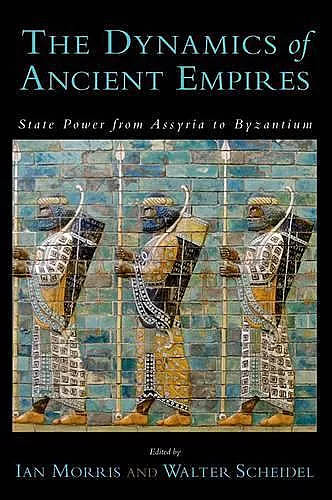The Dynamics of Ancient Empires
State Power from Assyria to Byzantium
Ian Morris editor Walter Scheidel editor
Format:Paperback
Publisher:Oxford University Press Inc
Published:23rd Dec '10
Currently unavailable, currently targeted to be due back around 19th September 2025, but could change
This paperback is available in another edition too:
- Hardback£122.50(9780195371581)

This book examines the interconnections between ancient empires, particularly focusing on Greek and Roman influences in the Near East, enriching historical understanding.
In The Dynamics of Ancient Empires, the author explores the interconnectedness of Greek and Roman empires with those of the Near East, challenging the traditional isolationist approach to historical study. This volume seeks to foster dialogue across various disciplines by examining the overlapping features of imperial states that influenced the Near East and the Mediterranean during the first millennia BCE and CE. The book highlights how these early empires, transcending ethnic, linguistic, and religious boundaries, played a crucial role in shaping world history over thousands of years.
The narrative begins with the emergence of the first known empires in Mesopotamia around 2350 BCE, followed by 2,500 years of sustained imperial growth. The author illustrates how a mere four major powers—the Roman, Parthian, Kushan, and Han empires—controlled a significant portion of the global population two millennia ago. Despite the importance of these empires in early civilization, comparative studies have been limited, a gap this book aims to fill by promoting cross-cultural perspectives on imperial state formation prior to European colonial expansion.
The volume features an introductory discussion on recent theories regarding imperial state formation and includes five case studies on the Neo-Assyrian, Achaemenid Persian, Athenian, Roman, and Byzantine empires. A concluding chapter leverages insights from evolutionary psychology to enhance understanding of imperial predation and exploitation across various historical contexts. Esteemed contributors, including John Haldon and Walter Scheidel, provide valuable perspectives, making this work a significant addition to the field of ancient history.
This volume is an ambitious cross-cultural perspective of the ancient empires in a series of case studies based on political theory as well as on recent archeological research. * Journal of World History *
ISBN: 9780199758340
Dimensions: 234mm x 156mm x 21mm
Weight: 558g
400 pages